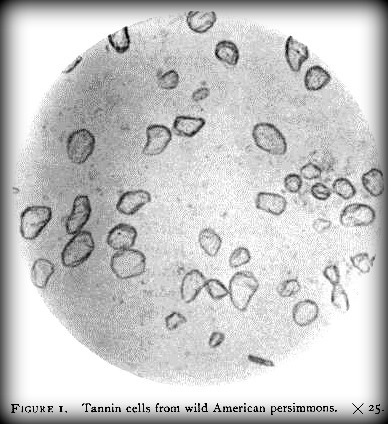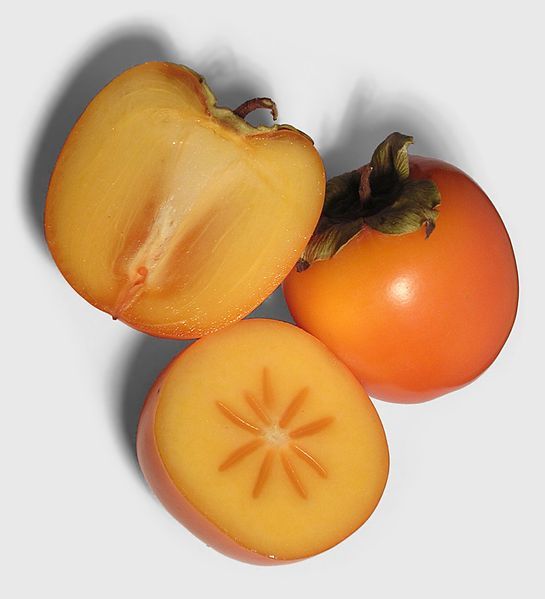American Persimmon : Tannins & Medicinal Uses of Persimmon
The mouth-drying, bitter astringency I experienced while biting into an unripe persimmon was due to tannins cells rupturing in the fruit’s flesh. Tannin cells contain polyphenolic compounds that bind with macromolecules like proteins. These compounds, when in contact with body tissues, cause the tissues to shrink. When we bite into an unripe persimmon, the polyphenolic compounds are released and our mouths experience the dry, bitter taste.
Though unpleasant to a curious forager in search for delicious fruits, the astringent property of persimmons has been found to increase antioxidant activity, anti-inflammatory activity, and atherosclerosis prevention. Throughout history, it has also served as perfect herbal remedy for many common illnesses.
The Catawba Indians boiled persimmon bark to make a mouth wash that treated thrush, and by the 18th century, in Little Rock, AK, the Medical Purveyor’s Department was paying twenty cents per pound for persimmon bark. Persimmon bark has been used as an antiseptic to treat external ulcers, uterine hemorrhages, diarrhea, diphtheria, and dropsy. During the 1840’s, in combination with dewberry and blackberry bark, persimmon bark was also used to treat gonorrhea. Again, due to its plentiful nature, persimmon tree played a vital role in providing humans with treatments and substitutes for more expensive medications.


